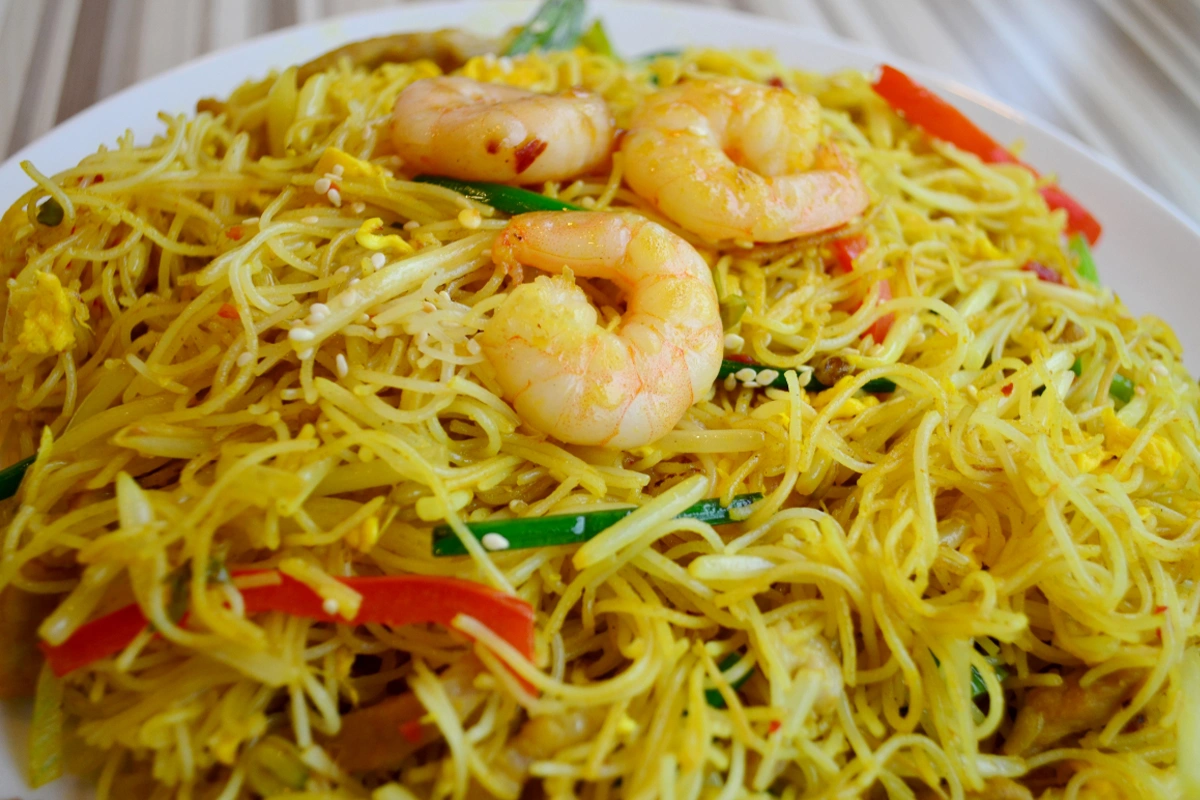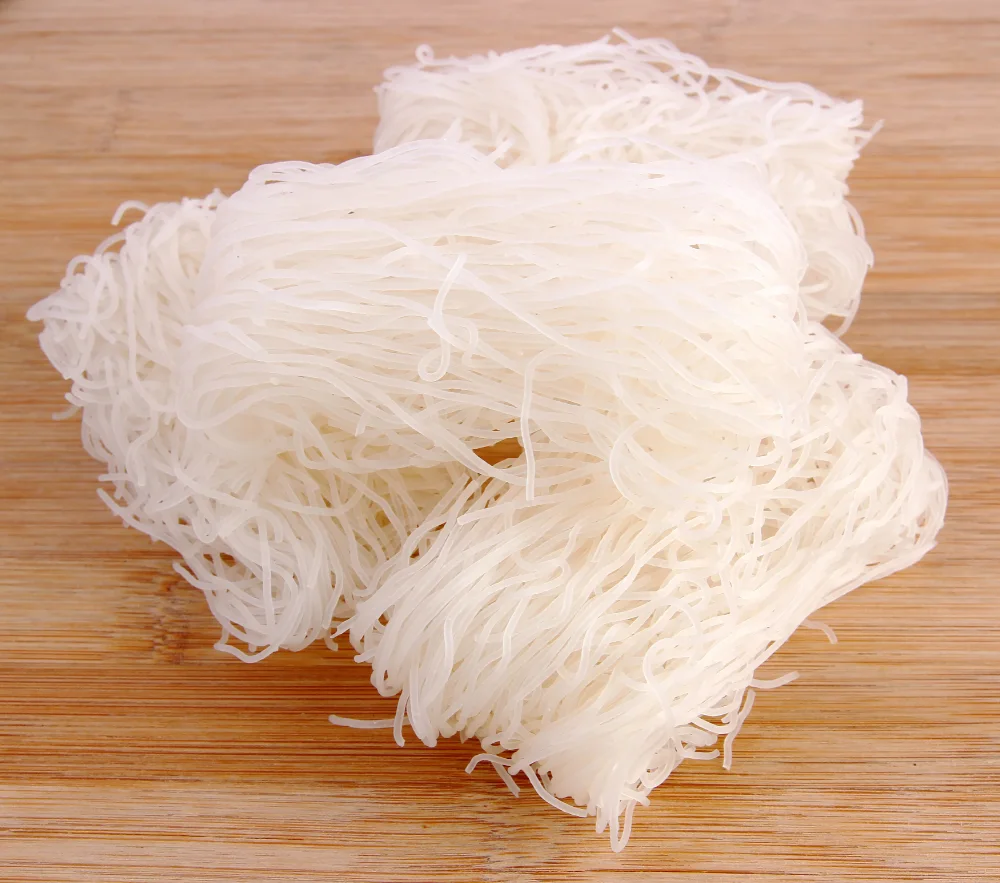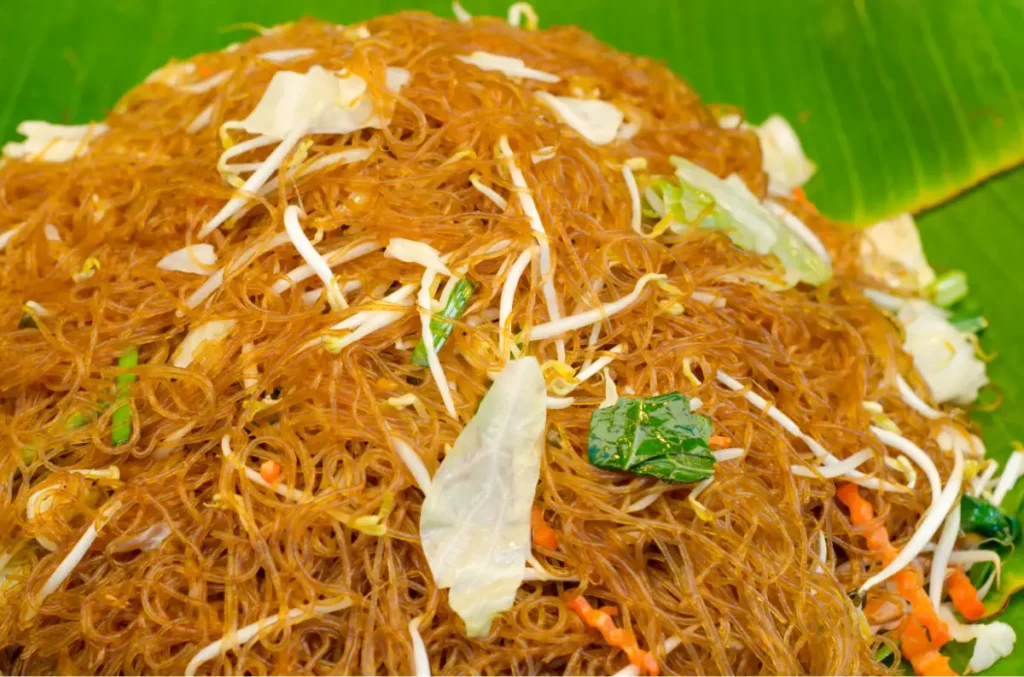Have you ever wondered about the thin, delicate noodles that grace dishes from Vietnam to Italy? Those, my friend, are vermicelli! This versatile ingredient transcends borders and cultures, adding its unique texture and subtle flavor to countless culinary creations. In this comprehensive guide, we’ll delve into the world of vermicelli, exploring its various types, culinary uses, cooking methods, and even its nutritional value. So, whether you’re a seasoned foodie or a curious beginner, get ready to embark on a delicious journey with us!
Unveiling Vermicelli
Introduction: More Than Just Thin Noodles
Vermicelli, a word derived from the Italian “little worms,” refers to a type of thin noodle found in various cuisines worldwide. While often associated with Asian dishes, vermicelli boasts a rich history and diverse applications that extend far beyond a single region. From the delicate rice noodles of Vietnam to the sturdy wheat varieties of the Middle East, vermicelli offers a world of culinary possibilities.
Types of Vermicelli: A Global Tapestry
Rice Vermicelli: The Asian Staple
Originating in China, rice vermicelli is a mainstay in many Asian cuisines. These thin, translucent noodles are made from rice flour and water, resulting in a delicate texture that’s perfect for soaking up flavorful broths and sauces. Think of iconic dishes like Vietnamese Bun Cha, where grilled pork and fresh herbs dance atop a bed of rice vermicelli, or Thailand’s beloved Pad Thai, where these noodles mingle with shrimp, peanuts, and a vibrant sauce. Rice vermicelli‘s neutral flavor makes it a blank canvas, readily absorbing the essence of any dish it graces.
Wheat Vermicelli: A Mediterranean Treasure
Venturing westward, we encounter wheat vermicelli, a staple in Mediterranean and Middle Eastern kitchens. Made from durum wheat, these noodles are slightly thicker and more substantial than their rice counterparts, offering a satisfying chewiness. You’ll find them adding heartiness to dishes like falafel wraps and kofta kebabs, where their ability to hold their shape amidst robust flavors truly shines.
Other Varieties: Expanding the Horizons
Beyond the well-known rice and wheat versions, a world of less common varieties awaits exploration. Potato starch, mung bean, and even sweet potato vermicelli offer unique textures and flavors, often reflecting the regional specialties of their origin. For instance, Korean japchae features this type of noodle stir-fried with vegetables and meat, showcasing the versatility of the ingredient.
Vermicelli in the Culinary Spotlight
Culinary Uses : A Culinary Chameleon
Vermicelli’s adaptability knows no bounds, making it a welcome addition to a wide array of dishes. Let’s explore some of the ways this versatile noodle takes center stage in cuisines around the globe:
Soups and Stews: Adding Depth and Heartiness
Vermicelli brings a delightful textural contrast to soups and stews. Imagine slurping up a comforting bowl of Vietnamese Bun Bo Hue, where the chewy noodles intertwine with spicy lemongrass broth and tender beef. Or perhaps, picture a classic Chicken Noodle Soup, where it adds a touch of substance to the soothing chicken broth and vegetables. When adding this pasta to soups, it’s best to cook it separately and add it towards the end to prevent it from becoming mushy.
Salads and Spring Rolls: A Refreshing Base
Vermicelli also shines in lighter fare, providing a refreshing base for salads and spring rolls. Vietnamese fresh spring rolls, for example, feature vermicelli wrapped in rice paper along with fresh vegetables and protein, creating a delightful blend of textures and flavors. Similarly, Thai glass noodle salad combines vermicelli with minced meat, herbs, and a tangy dressing, resulting in a vibrant and satisfying dish. Remember to rinse cooked vermicelli with cold water to prevent sticking and maintain its delicate texture in salads.
Stir-fries and Noodle Dishes: The Star Ingredient
Vermicelli truly takes center stage in various stir-fries and noodle dishes. Singapore Noodles, a popular stir-fry dish, features vermicelli tossed with curry powder, vegetables, and protein, creating an explosion of flavors and textures. Similarly, Pad See Ew, a Thai stir-fry, showcases vermicelli‘s ability to absorb the rich flavors of soy sauce, garlic, and Chinese broccoli. The key to achieving the perfect texture in stir-fries is to avoid overcooking the vermicelli, ensuring it remains slightly chewy and not mushy.
Desserts: A Sweet Ending
Vermicelli’s versatility extends even to the realm of desserts. Indian Kheer, a creamy rice pudding, often incorporates vermicelli for added texture and richness. In the Philippines, Palitaw features chewy rice dough balls coated in grated coconut and sugar, offering a delightful sweet treat. These examples showcase vermicelli‘s ability to adapt to both savory and sweet applications, highlighting its remarkable culinary flexibility.
Mastering the Art of Cooking Vermicelli
From Package to Plate
Cooking with vermicelli may seem intimidating, but fear not! With a few simple tips and techniques, you’ll be whipping up delicious vermicelli dishes in no time.
Choosing the Right Vermicelli: A Matter of Preference
The first step to vermicelli success is selecting the right type. Consider the dish you’re preparing and the desired texture. Rice vermicelli works well in soups, salads, and spring rolls, while wheat vermicelli is better suited for heartier dishes like stir-fries and stews. Additionally, pay attention to the thickness of the noodles, as this can affect cooking time and texture.
Basic Cooking Techniques: Simplicity at its Finest
Cooking vermicelli is generally a straightforward process. Most varieties require soaking in hot water until softened, followed by a quick boil or stir-fry. The exact cooking time will vary depending on the type and thickness of the noodles, so be sure to follow package instructions or test for doneness as you go. To prevent sticking, rinse the cooked vermicelli with cold water and toss it with a little oil.
Flavoring and Seasoning: Unleashing the Flavor Potential
Vermicelli acts as a blank canvas, readily absorbing the flavors of sauces, spices, and herbs. Popular choices include soy sauce, fish sauce, oyster sauce, garlic, ginger, chili peppers, and fresh herbs like cilantro and basil. The key is to find a balance of flavors that complements the specific dish you’re creating. For instance, a Thai-inspired stir-fry might benefit from a combination of sweet, sour, salty, and spicy flavors, while a Vietnamese noodle salad might call for a lighter, more herbaceous dressing.
Health Benefits
Nutritional Value and Health Benefits: Beyond Deliciousness
Vermicelli offers more than just culinary delight; it also provides several nutritional benefits. Let’s delve into the nutritional profile of this versatile noodle:
Macronutrients and Calories: Understanding the Basics
The macronutrient content of vermicelli varies depending on the type. Rice vermicelli is primarily composed of carbohydrates, providing energy for the body. Wheat vermicelli, on the other hand, contains a higher amount of protein in addition to carbohydrates. Both types are relatively low in fat and calories, making them suitable options for those watching their weight. However, it’s important to be mindful of portion sizes and the overall composition of the dish to maintain a balanced diet.
Micronutrients and Vitamins: Hidden Gems
Vermicelli also contains various micronutrients and vitamins, albeit in smaller amounts. Rice vermicelli is a good source of iron, which is essential for oxygen transport in the body. It also provides B vitamins, which play a role in energy metabolism. Wheat vermicelli, on the other hand, offers a slightly different micronutrient profile, with higher amounts of certain minerals like selenium and manganese. While vermicelli alone may not be a significant source of all essential nutrients, it can contribute to a healthy and balanced diet when combined with other nutrient-rich foods.
Gluten-Free Options: Catering to Dietary Needs
For individuals with gluten sensitivities or celiac disease, rice vermicelli is a safe and delicious alternative to wheat-based noodles. Its naturally gluten-free composition ensures that everyone can enjoy the culinary versatility of vermicelli without compromising their dietary restrictions. However, it’s essential to double-check labels and ensure that the product is certified gluten-free to avoid any potential cross-contamination.
Bringing Vermicelli to Life: Recipe Inspiration
Now that you’re well-versed in the world of vermicelli, it’s time to put your knowledge into action! Here are a couple of recipe ideas to get you started, showcasing the versatility and deliciousness of this beloved noodle:
Recipe 1: Vietnamese Fresh Spring Rolls with Peanut Sauce
These refreshing rolls are perfect as an appetizer or light meal. The combination of fresh vegetables, herbs, and vermicelli creates a delightful textural contrast, while the peanut sauce adds a rich and savory depth.
Ingredients:
- Rice paper wrappers
- Cooked rice vermicelli
- Lettuce leaves
- Cucumber, julienned
- Carrot, julienned
- Fresh mint leaves
- Fresh cilantro leaves
- Cooked shrimp or tofu (optional)
For the Peanut Sauce:
- Peanut butter
- Soy sauce
- Lime juice
- Honey
- Water
- Sriracha (optional)
Instructions:
- Prepare the peanut sauce by whisking together all the ingredients until smooth. Adjust the consistency with water as needed.
- Soak a rice paper wrapper in warm water until softened.
- Lay the wrapper on a flat surface and place lettuce leaves, vermicelli, cucumber, carrot, mint, cilantro, and shrimp or tofu in the center.
- Fold the sides of the wrapper over the filling and roll it up tightly, starting from the bottom.
- Serve immediately with the peanut sauce for dipping.
Recipe 2: Thai-Inspired Vermicelli Salad with Peanut Dressing
This vibrant salad is bursting with flavors and textures. The combination of vermicelli, vegetables, herbs, and a tangy peanut dressing creates a satisfying and refreshing meal.
Ingredients:
- Cooked rice vermicelli
- Red bell pepper, thinly sliced
- Carrot, julienned
- Cucumber, julienned
- Red onion, thinly sliced
- Fresh cilantro leaves
- Fresh mint leaves
- Chopped peanuts
For the Peanut Dressing:
- Peanut butter
- Soy sauce
- Lime juice
- Honey
- Rice vinegar
- Sesame oil
- Water
- Sriracha (optional)
Instructions:
- Prepare the peanut dressing by whisking together all the ingredients until smooth. Adjust the consistency with water as needed.
- In a large bowl, combine the vermicelli, bell pepper, carrot, cucumber, red onion, cilantro, and mint.
- Pour the peanut dressing over the salad and toss gently to combine.
- Garnish with chopped peanuts and serve immediately.
Feel free to customize this salad with your favorite protein sources such as grilled chicken, shrimp, or tofu for a more substantial meal.
FAQs: Unraveling the Mysteries of Vermicelli
We’ve covered a lot of ground on our vermicelli journey, but you might still have some lingering questions. Let’s tackle some frequently asked questions to ensure you’re fully equipped to conquer the world of vermicelli:
What are Vietnamese vermicelli made of?
Vietnamese vermicelli are typically made from rice flour and water. This gives them their characteristic delicate texture and translucent appearance. They are naturally gluten-free and are a staple in many Vietnamese dishes such as Bun Cha and fresh spring rolls.
What is vermicelli made out of?
Vermicelli can be made from a variety of starches, depending on the region and culinary tradition. The most common types include:
- Rice vermicelli: Made from rice flour and water, popular in Asian cuisines.
- Wheat vermicelli: Made from durum wheat, commonly used in Mediterranean and Middle Eastern dishes.
- Other starches: Less common varieties include mung bean vermicelli, potato starch vermicelli, and sweet potato vermicelli.
What is Chinese vermicelli?
Chinese vermicelli generally refers to rice vermicelli, which is widely used in Chinese cuisine. They are often found in soups, stir-fries, and noodle dishes, adding a delicate texture and subtle flavor.
Is vermicelli just spaghetti?
While both vermicelli and spaghetti are types of pasta, they have distinct differences. Vermicelli is much thinner and more delicate than spaghetti, and it is typically made from different starches, such as rice or wheat. Spaghetti, on the other hand, is usually made from durum wheat and has a thicker, more robust texture.
What is the Difference Between Vermicelli and Rice Noodles?
While vermicelli and rice noodles are often used interchangeably, there is a subtle distinction. Vermicelli is a broader term encompassing thin noodles made from various starches, including rice, wheat, and mung bean. Rice noodles, on the other hand, specifically refer to noodles made solely from rice flour. So, all rice noodles are a type of vermicelli, but not all vermicelli are rice noodles.
Can I Use Vermicelli as a Substitute for Spaghetti?
Vermicelli can be used as a substitute for spaghetti in certain dishes, particularly those with lighter sauces and flavors. However, keep in mind that vermicelli is generally thinner and more delicate than spaghetti, so it may require a shorter cooking time and might not hold up as well in heavier sauces. Experiment and see what works best for your taste and the specific recipe.
What are Some Popular Brands of Vermicelli?
Numerous brands offer high-quality vermicelli. Some popular options include:
- Three Ladies Brand: Known for its extensive range of Asian noodles, including various types of vermicelli.
- Annie Chun’s: Offers a variety of convenient and flavorful vermicelli products, perfect for quick and easy meals.
- Thai Kitchen: A trusted brand for Thai ingredients, including rice vermicelli ideal for authentic Thai dishes.
- Explore Asian grocery stores in your area: You’ll often find a wide selection of vermicelli brands catering to different regional cuisines and preferences.
Conclusion: A World of Noodles Awaits
As we reach the end of our vermicelli exploration, it’s clear that this humble noodle is anything but ordinary. From its diverse origins and types to its countless culinary applications, vermicelli has earned its place as a global culinary staple. Whether you’re slurping up a comforting bowl of noodle soup, savoring a refreshing salad, or indulging in a sweet treat, vermicelli offers a world of possibilities to tantalize your taste buds.
So, why not embrace the versatility of vermicelli and embark on your culinary adventure? Experiment with different types, explore various recipes from around the world and discover the endless ways this simple ingredient can elevate your meals. Remember, the world of noodles awaits – are you ready to explore?
More Delicious Recipes:
- Scrambled eggs in oven: Revolutionize your breakfast with a simple, foolproof method for making scrambled eggs in the oven. This hands-off technique ensures perfectly fluffy and evenly cooked eggs every time, ideal for busy mornings or feeding a crowd.
- Russian Buttercream: Discover the silky, melt-in-your-mouth texture of Russian Buttercream. This delectable frosting is surprisingly easy to make and requires fewer ingredients than traditional buttercreams. Its light and airy consistency is perfect for decorating cakes and cupcakes.
Russian Buttercream: The Ultimate Guide to Creamy Perfection




1 thought on “Vermicelli: A Comprehensive Guide to Types, Uses, and Recipes”